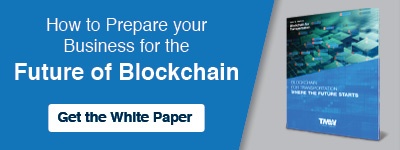Ten years ago, the iPhone took nearly 200 years of technological progress in communication and put it the palm of your hand. Apple essentially boiled down the history of electric machines used for communication that began with the telegraph and evolved into the internet, and reduced to a small, sleek gadget that one could operate with a fingertip. Ten years later, the smartphone is probably the most widely-used communication object on the globe, but one day, and it will be sooner than you think, we’ll view smartphones in the same way we now think of fax machines and car phones, which seemed fairly revolutionary in the 1980s.

In addition to being innovations in how humans communicate, the telegraph, radio, TV, personal computer, and the smartphone have changed the way we work, transforming how information is created, accessed, and disseminated. Each step in these innovative progressions also removed barriers, often eliminating certain kinds of work while creating new ones. They also created new vocabularies which initially sounded odd but soon gained widespread understanding and became everyday language. Ten years ago if someone said they had an app that turned selfies into gifs and streamed them live in the cloud for their followers no one would have understood the context for how some of these everyday words were being used.
That’s one way to wrap your head around the current buzz about Blockchain and the terms associated with it like ledger, permission, consensus and smart contracts. It’s going to change how we work, and like every other innovation we embrace, it comes with a whole new set of familiar-sounding words used in new ways.
It’s worth remembering Blockchain was developed as a means to move Bitcoin, a digital currency, between people. There’s no such thing as “Bytecoin,” because bits and bytes describe different things. Generally, bits measure the speed of the transfer of data, while bytes measure the size of what’s being transferred. Remember the difference by visualizing yourself moving a bit and taking a byte.
Blocks are formed from multiple bytes (digestive analogy, anyone?)--the progression goes bits/bytes/blocks, and the blockchain results from having moved enough bits, and accumulated enough bytes, to the point where it’s necessary to manage the resulting inventory of bytes (or data). This compiled data, whether it’s Bitcoin, widgets or information of any kind, represents an item of value that can both originate from and be transferred between numerous sources in transactional ways. Because these are digital transactions carried out by numerous participants on both ends, the value of the data must be validated and managed.
Thus we often hear a blockchain described as a distributed ledger, though it’s tempting to see it as a kind of electronic marketplace, like eBay or Amazon. There are two primary differences. First, transactions in an electronic marketplace are limited and controlled by a central entity that sets the rules and takes a cut; in a blockchain, the roles are distributed among participants based on agreed-upon terms, and all transactions are transparent to every participant (although private channels can be created within a blockchain). The second primary difference is referred to as consensus, which means an agreed-upon number participants validate the authenticity of transactions, whether it be a sale or an addition of inventory. Once authenticated, transactions are executed via a “smart contract,” created by computer code instead of lawyers. Rather than an electronic marketplace, a blockchain is more like a self-governed digital swap meet for an entire industry on a level playing field, where participants can see everything that can be bought or sold, and know going in that the transaction will be executed to their satisfaction.
Example of Blockchain in the Freight Bidding Process
|
1. Shipper |
|
|
2. Carrier |
|
|
3. Rounds |
|
|
4. Award |
|
|
5. Operation |
Looping back to how this will change the way we’ll work--imagine managing your business without having to use email or the phone to find, purchase, and sell inventories or services, issue terms, manage accounts and track your current market opportunities online--all in one place.
We’ve come a long way since the telegraph. Hold onto your hat, Blockchain appears to be here for the long haul.
For more information on Blockchain technology in transportation services, please download our whitepaper by 2017 Data Visionary Award-Winner Timothy Leonard and his team. For details on software solutions available now to bid on RFPs, contact us.



